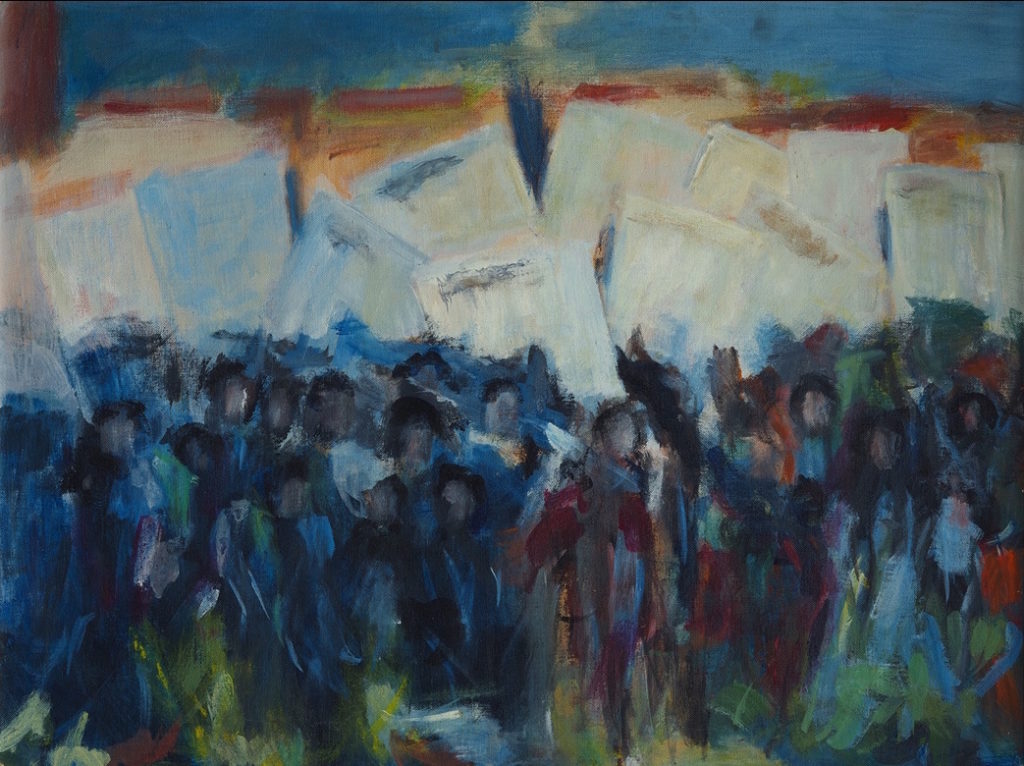Opinion
Alma Thomas Rooted Her Abstractions in Race
THE DAILY PIC: At the Studio Museum, Alma Thomas let the fight for civil rights shape her later abstractions.

THE DAILY PIC: At the Studio Museum, Alma Thomas let the fight for civil rights shape her later abstractions.

by
Blake Gopnik

THE DAILY PIC (#1646): More than all the “classic” Alma Thomas abstractions in her lovely solo show now at the Studio Museum in Harlem, I was struck by this early piece, titled Sketch for March on Washington. It was painted in about 1964 and is now in the Columbus Museum in Georgia.
I couldn’t get over how the stacked rectangles of the placards (I suppose) in the background of this scene so perfectly foreshadow the blocks and bricks of paint that Thomas built her pictures from once she hit her stride as an abstractionist in the later ’60s and ’70s.
In one way, that’s not so surprising. When Thomas was coming of age as a painter, in the 1950s and before, there was still a very strong polemic that said you should always be abstracting from some real thing you’d seen, rather than coming up with a purely non-objective composition. What is surprising is that Thomas chose to root her abstracting – an entire late career in abstraction, as it turned out – in a scene with such real political weight.
There’s always been much debate about how much racial content we should or can read into the abstract pictures of black Modernists such as Thomas, or for that matter Norman Lewis and Sam Gilliam. Today’s Daily Pic suggests that race was there at the very origin of Thomas’s mature work as a painter. (Courtesy The Columbus Museum, Georgia; gift of Miss John Maurice Thomas in memory of her parents John H. and Amelia W. Cantey Thomas and her sister Alma Woodsey Thomas)
For a full survey of past Daily Pics visit blakegopnik.com/archive.